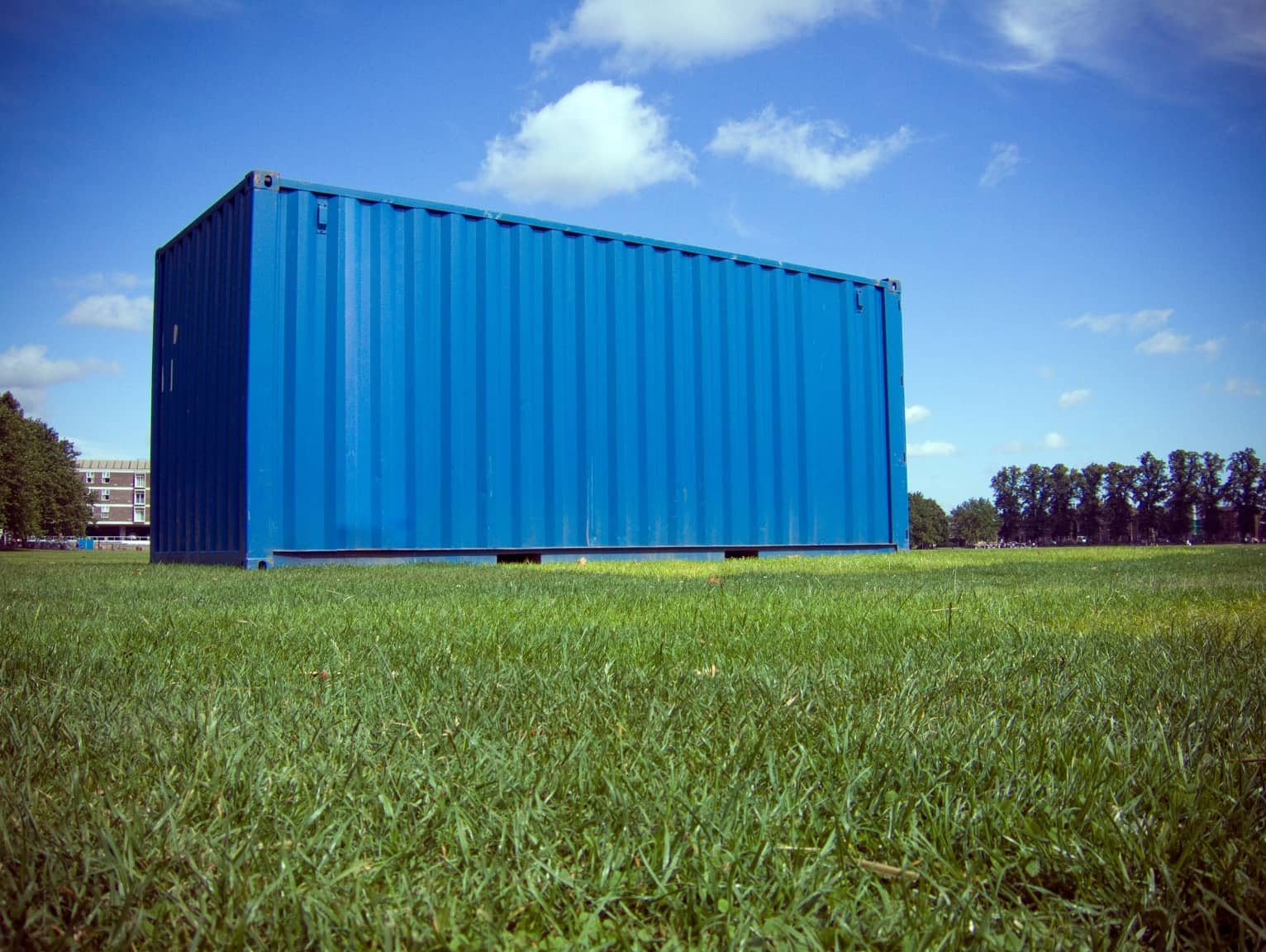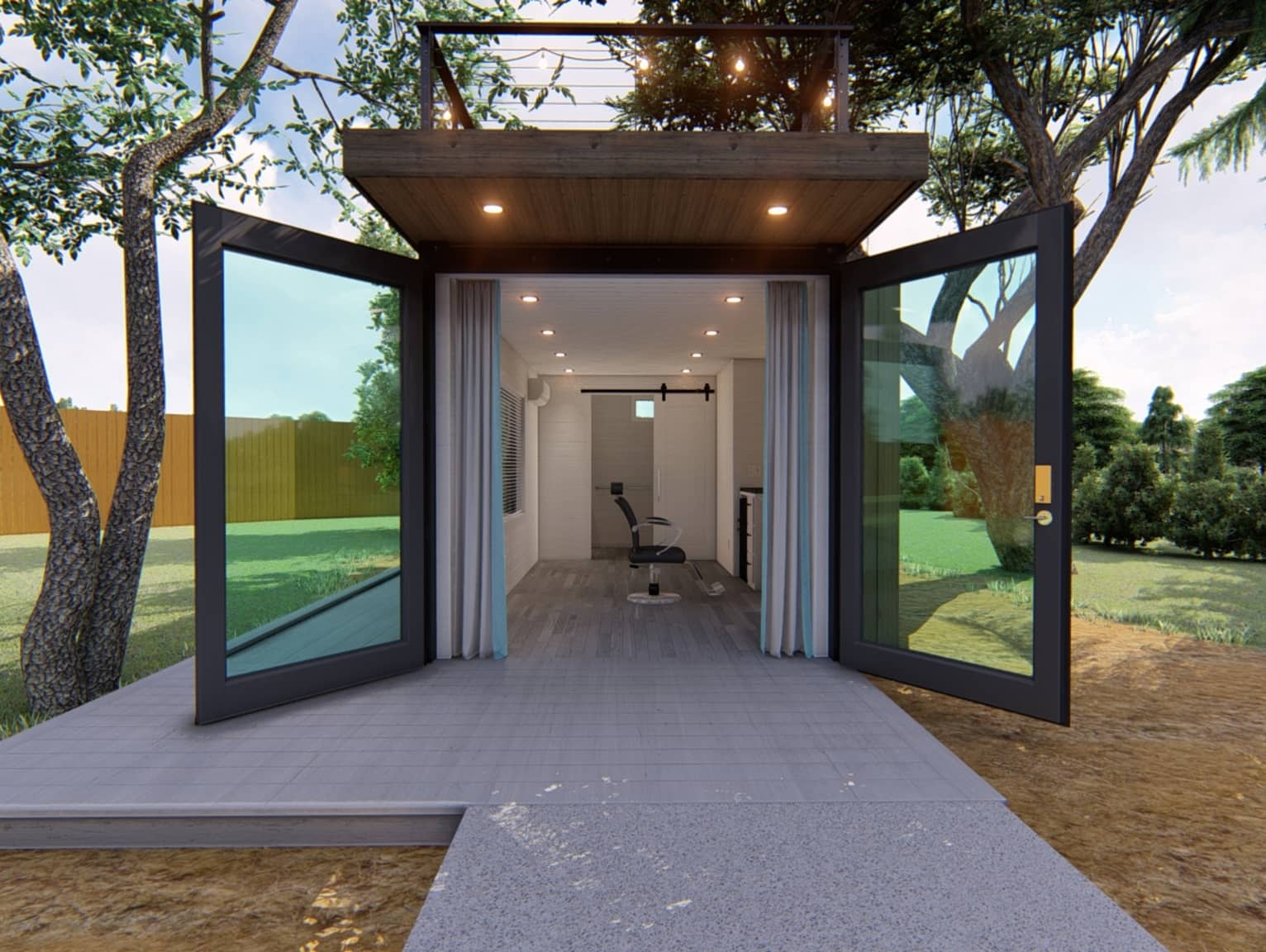If you’re running out of garden storage, you’ve probably already thought about getting a garden shed. But with prices creeping up and some timber sheds falling to bits after a few years, more people are looking at alternatives, like using a shipping container instead.
So, can you turn a shipping container into a garden shed, and is it worth doing? Let’s find out.
Why Use a Shipping Container as a Garden Shed?
First things first, they’re very solid. Anything that’s built to take a beating at sea is more than capable of handling rough weather and plenty of garden wear and tear. You won’t find a flimsy door or cracked side panel, so if you’re fed up with replacing broken locks or patching up leaks in your old shed, a container might be just what you need.
They’re also resistant to pests, and give you lots of space. Even a standard 20ft container should have around 150 square feet of garden storage. That’s more than enough for tools, bikes, furniture, or even a ride-on mower.
Do You Need Planning Permission?
In most cases, no. More often than not, a shipping container used as a garden shed is classed as a temporary structure. That means you can often put one on your land without needing planning permission as long as it’s for personal use and doesn’t take up too much space or block anyone’s view.
However, there are exceptions.
If your property is listed, in a conservation area, or you live in a flat, it’s worth checking with your local council first. And even if planning permission isn’t required, your neighbours might still appreciate a heads-up if a big metal box is about to land in your back garden.
What Can You Use a Shipping Container Garden Shed For?
The obvious one is garden storage. Containers are perfect for housing tools, lawnmowers, outdoor furniture, bikes, and bulky items you don’t want indoors. Unlike a traditional garden shed, they don’t warp, rot, or leak when the weather turns bad.
They’re also handy for other things.
With a few tweaks (like insulation, windows, and power), you can turn a container into a tidy little workshop, hobby room, or garden office. They’re a great way to make use of spare space without building something permanent.
What about heat and ventilation?
Unmodified containers can get warm in summer and chilly in winter. If you’re just using it to store tools, that might not matter. But if you’re planning to spend time inside, you’ll need to think about insulation and airflow.
The good news is that insulation is easy enough to fit. You can line the walls with plywood or plasterboard and use common insulation materials like Celotex or rock wool. Ventilation can be provided with louvre vents, small windows, or even a roof fan if needed.
How Do you Secure it?
One of the biggest perks of using a shipping container as a shed is how secure it is. These things are built like tanks. Most come with solid steel doors and locking gear that’s far tougher than anything you’d find on a timber shed. You can add a container lockbox for extra protection, which helps prevent bolt cutter access. If you’re keeping bikes, tools or machinery outside, that extra security is a big plus.
Will A Shipping Container Look Out of Place?
Some people love the industrial look. Others… not so much. If you’re worried about a big blue or rusty box standing out in your garden, you’ve got options.
You can paint the container to blend in with your surroundings or even cover it with cladding to make it look more like a garden building. A green roof, planters around the edges or a trellis with climbers can soften the look, too. Remember, if you’re not keen on bright colours or bold logos, many used containers can be sourced in neutral tones like grey, dark green, or brown.
Is it Easy to Maintain?
Yes. Once in place, there’s not really a great deal you need to do. Keep the roof clear of leaves and debris, check the seals now and again, and make sure the paint isn’t flaking if you’ve gone for a custom finish.
When you install your shipping container garden shed, you’ll probably want to raise it slightly with paving slabs or sleepers to help with airflow underneath and avoid moisture buildup. But (generally speaking) they’re about as low-maintenance as you can get when it comes to garden storage.
What’s the Right Size for a Shipping Container Garden Shed?
That tends to depend on what you’re storing. A 10ft container might be enough for basic tools, a lawnmower and some shelves. A 20ft model gives you proper room to walk around and store larger items like bikes, patio furniture or even a workbench.
There are 40ft containers, too, but those are usually better suited for big spaces and would probably be a bit excessive for a garden shed. If in doubt, measure up what you want to store and check the internal dimensions. You might be surprised how much you can fit in. You can also get in touch with us for a bit of guidance on what might suit your needs best.
Want to Upgrade Your Garden Storage with a Shipping Container?
At Philspace, we supply a range of used shipping containers for sale that are ideal for garden use. Whether you need extra garden storage, a tough-as-nails garden shed, or you’re eyeing up a future garden office, we’ve got options to suit.
All of our used sale items are carefully checked, and we can advise on the right setup for your space. View our current stock online or get in touch with any questions. We’re happy to help.
FAQs
Can I put a container directly on grass or soil?
It’s better to raise it slightly on a firm base like paving slabs or concrete blocks to prevent damp and rust.
How long do shipping containers last?
With a bit of care, a container can last 25+ years. Regular repainting and keeping it off wet ground help extend its life.
Do containers come with shelves or fittings inside?
Used containers usually come empty, but it’s easy to add racks, hooks, or worktops to fit your storage needs.
Are containers watertight from day one?
Yes, provided it’s in good condition. Look for units that are wind and watertight or refurbished by a reputable supplier.
Can I move the container later if needed?
It might be tricky unless you’ve got access for a lorry or crane. Keep that in mind when choosing the location in your garden.







